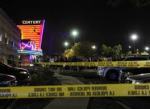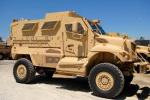This week an official report commissioned by the Aurora City Government about the July 20, 2024 theater shooting was released. The report was the work of the System Planning Corporation, whose TriData Division conducts detailed reviews of responses to emergency situations, including the mass shootings at Columbine, Virginia Tech and the University of Illinois. So they know what they’re doing and the 188-page report is a serious and sober assessment of what was done right at Aurora and what was done wrong.
What was done right, first and foremost, was the immediate, quick and effective response of cops and firefighters to an emergency situation that can only be described as utter chaos. The first police unit arrived at the scene within two minutes after the first 911 call, by which time hundreds of theater-goers were milling around, many bloodied and in shock, others wounded, others worried about friends whom they couldn’t find and, worst of all, nobody knowing whether the shooter or shooters were still inside the building or were moving from one theater to another.
 The good news is that multiple police units arrived quickly at the scene, began looking for the gunman and assisting or controlling the panic-stricken crowd. Police units also made what was termed an “unprecedented” decision to transport shooting victims to hospitals in their own cars, rather than waiting for ambulances or other medical units to take charge. According to the report, had police cars “not been used for rapid transport of seriously wounded victims, more likely would have died.”
The good news is that multiple police units arrived quickly at the scene, began looking for the gunman and assisting or controlling the panic-stricken crowd. Police units also made what was termed an “unprecedented” decision to transport shooting victims to hospitals in their own cars, rather than waiting for ambulances or other medical units to take charge. According to the report, had police cars “not been used for rapid transport of seriously wounded victims, more likely would have died.”
The bad news was that there was no unified command or communication system linking the police to fire/EMS personnel. As a result, there was confusion in moving ambulances closer to victims, as well as assessing the risk to EMS personnel who needed to get into the theater in order to deal with victims who were still inside. The coordination between agencies was not resolved until nearly an hour passed after the shooting began, and numerous communications between first-responders were either lost or misunderstood. What probably saved additional lives was the fact that one of the first police officers to gain entrance to the theater was trained as a paramedic and thus able to make triage decisions until the situation was brought under control.
The report also contains suggestions for managers of theaters and other places where large groups are gathered and shootings might occur. Chief among these recommendations is what the report calls public education, “inform the public of appropriate measures if caught in a shooting situation.” And the appropriate responses to a shooter are to flee, hide, and if neither is possible, to attack. Physical resistance to shooters, according to the Police Executive Research Forum, reflects a recognition that shooters now use high-capacity, semi-automatic weapons that may inflict severe tolls even if police respond, as in Aurora, in under minutes from the first shots being fired.
The flee, hide, fight strategy, which is best described in a video produced by the Houston PD, doesn’t take into account the ability of armed citizens to resist an active shooter by pulling out and using their own guns. And we all know what Wayne LaPierre says, “only thing that stops a bad guy with a gun is a good guy with a gun.” Except there’s only one little problem. It’s not true. The recent FBI report on active shootings disclosed that in 160 incidents between 2000 and 2013, only one shooting was stopped by a civilian armed with a gun.
Don’t get me wrong. I’m not in any way opposed to using a gun or anything else for genuine, self-defense. But I am opposed to the shameless pandering of the NRA and other gun promoters to the childish fantasy that if you walk around with a gun, that you’re protecting yourself or others from harm. SWAT teams and other special response units train constantly - hundreds of hours – making themselves ready to use guns. Do you really think that sitting on your duff watching a video amounts to the same thing?

Recent Comments